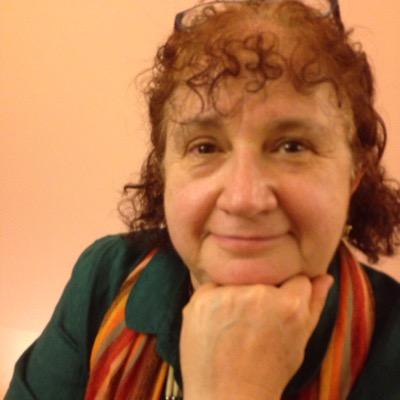COVID Check-In: Illinois Went Into Lockdown One Year Ago. What Have We Learned?
Forum Director of Research Noreen Sugrue provides regular updates on the implications of the latest COVID-19 data. Here, she looks back at all the factors that allowed COVID to spread rampant across the state and nation, and especially in the Latino community, as vaccines are finally being rolled out at the one-year anniversary of lockdown.
By Noreen Sugrue, Director of Research
One year ago this week, the state of Illinois entered lockdown due to the COVID-19 pandemic. We had only just realized that the situation was far more serious than expected, though we did not yet know just how long-lasting or severe its consequences would be, or how disproportionately they would fall. As we embark on year two of COVID, it’s worth taking a moment to reassess the context of these consequences as we continue to address them.
Latinos in Illinois still have nearly twice the rate of cases as every other racial-ethnic group. Forty-one percent of COVID deaths to those aged 20-59 are Latino, the largest percent of any racial-ethnic group. Nationally, young Latinos under 20 are getting sicker than young people in other racial-ethnic groups.
In the earliest days of the pandemic, older Americans—particularly those in congregate living settings and older Black Americans—began to contract the virus, get sick, and die at horrific rates. Healthcare workers, community leaders, public health officials, and state and local elected officials scrambled to mitigate the pandemic’s inequitable mortality toll on these elderly.
As the early weeks wore on, we began to witness increasing illnesses and deaths among those charged with keeping us healthy and alive: healthcare workers. Federal efforts to protect these workers were insufficient, and the burden of responding fell increasingly on state and local officials. Hospitals became overrun, supplies grew scarce, and most of all, the amount of healthy healthcare workers to care for patients started to dwindle.
Securing PPE and protecting healthcare and essential workers became a priority. Philanthropy, the private sector, and state and local government had to come together. In places like Illinois, the governor, using his own personal resources, secretly shipped in PPE.
As the data were being tracked, we began to witness a shift in who was getting sick and what communities were being most impacted. By early April, a new pattern of illness and death was emerging. While economic and health devastation was occurring in all marginalized communities, Latinos especially were being hard hit. Before COVID, Latinos had the lowest rates of health insurance and participation in publicly funded social safety programs; during COVID, they were forced to turn to the self-made social safety net they had created pre-COVID. That is, they turned to working multiple high-risk, low-paying jobs where their exposure to COVID was high, such as cleaning, manufacturing, and meat and poultry processing. At the same time, the community, with its large number of essential workers, began to see increases in illnesses, hospitalizations, and deaths, especially among those aged 20-59.
The data told us that community spread among Latinos was occurring at an alarmingly high rate—not because of behavioral choices, but because of economic necessity. In addition, a significant number of Latinos live in multigenerational households and in smaller spaces. These living arrangements made it impossible to isolate or socially distance from other members of the household in order to stifle viral spread. Taken together, these factors were a recipe for rapid community spread.
In mid to late spring, there was a federal economic package designed to assist those whose businesses or jobs were lost or threatened due to COVID. On the face of it, this was welcome news for Latinos. But the federal government left mixed-status families out of this relief, despite the fact that undocumented immigrants and their families—who pay significant taxes—have strong consumer spending power and work at the essential, dangerous jobs that keep society functioning. Illinois, alongside and some other states including California and New York, stepped in to assist those Latinos who were left out. But states have nowhere near the level of resources as the federal government. It was not enough to offset the damage in the Latino community.
Meanwhile, a housing crisis was looming. Nearly 50 percent of Latinos were already behind on payments, or did not know how they were going to pay housing costs. Once again, state and local leaders stepped into this arena. They knew that homelessness and tenuous housing arrangements were risk factors for accelerating community spread. It was at that point that many states set in place a necessary but imperfect set of moratoria on evictions, foreclosures, and termination of utilities. However, when these moratoria expire, we will likely see a tsunami of housing displacement among Latinos.
The COVID-driven economic downturn exposed and exacerbated structural economic inequities. Upon the shutdown, workers who could work from home did. They kept their jobs, benefits, and steady paychecks. But only about 16 percent of Latinos had jobs that could be done remotely. Those in low-wage jobs, a preponderance of which cannot be done remotely, scrambled to find diapers, milk, and bread. They tried, often in vain, to find a way to earn a living to care for their families.
While the Biden-Harris administration has expanded eligibility for federal assistance, there are still far too many Latinos who are excluded from such support. In Illinois, for example, approximately 405,000 undocumented immigrants and their families are still omitted from relief dollars, even though 70 percent of these workers are employed as essential workers.
The challenge as we are enter year two of this pandemic is to ensure that equity drives access to resources, economic support, job training, housing assistance, nutritional assistance, healthcare, and most importantly, vaccines. Nowhere is this need for equity more glaring than in the Latino community.
